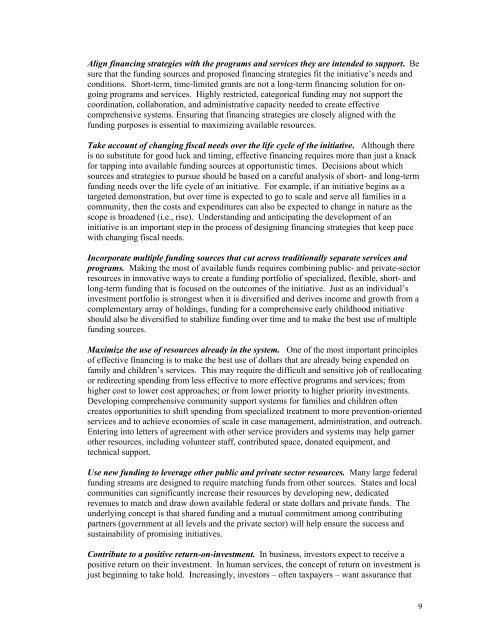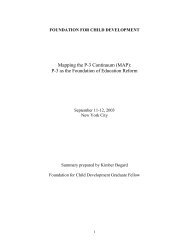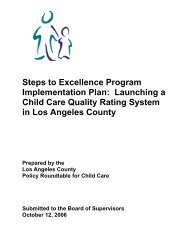STRATEGIC FINANCING: - National Academy for State Health Policy
STRATEGIC FINANCING: - National Academy for State Health Policy
STRATEGIC FINANCING: - National Academy for State Health Policy
You also want an ePaper? Increase the reach of your titles
YUMPU automatically turns print PDFs into web optimized ePapers that Google loves.
Align financing strategies with the programs and services they are intended to support. Be<br />
sure that the funding sources and proposed financing strategies fit the initiative’s needs and<br />
conditions. Short-term, time-limited grants are not a long-term financing solution <strong>for</strong> ongoing<br />
programs and services. Highly restricted, categorical funding may not support the<br />
coordination, collaboration, and administrative capacity needed to create effective<br />
comprehensive systems. Ensuring that financing strategies are closely aligned with the<br />
funding purposes is essential to maximizing available resources.<br />
Take account of changing fiscal needs over the life cycle of the initiative. Although there<br />
is no substitute <strong>for</strong> good luck and timing, effective financing requires more than just a knack<br />
<strong>for</strong> tapping into available funding sources at opportunistic times. Decisions about which<br />
sources and strategies to pursue should be based on a careful analysis of short- and long-term<br />
funding needs over the life cycle of an initiative. For example, if an initiative begins as a<br />
targeted demonstration, but over time is expected to go to scale and serve all families in a<br />
community, then the costs and expenditures can also be expected to change in nature as the<br />
scope is broadened (i.e., rise). Understanding and anticipating the development of an<br />
initiative is an important step in the process of designing financing strategies that keep pace<br />
with changing fiscal needs.<br />
Incorporate multiple funding sources that cut across traditionally separate services and<br />
programs. Making the most of available funds requires combining public- and private-sector<br />
resources in innovative ways to create a funding portfolio of specialized, flexible, short- and<br />
long-term funding that is focused on the outcomes of the initiative. Just as an individual’s<br />
investment portfolio is strongest when it is diversified and derives income and growth from a<br />
complementary array of holdings, funding <strong>for</strong> a comprehensive early childhood initiative<br />
should also be diversified to stabilize funding over time and to make the best use of multiple<br />
funding sources.<br />
Maximize the use of resources already in the system. One of the most important principles<br />
of effective financing is to make the best use of dollars that are already being expended on<br />
family and children’s services. This may require the difficult and sensitive job of reallocating<br />
or redirecting spending from less effective to more effective programs and services; from<br />
higher cost to lower cost approaches; or from lower priority to higher priority investments.<br />
Developing comprehensive community support systems <strong>for</strong> families and children often<br />
creates opportunities to shift spending from specialized treatment to more prevention-oriented<br />
services and to achieve economies of scale in case management, administration, and outreach.<br />
Entering into letters of agreement with other service providers and systems may help garner<br />
other resources, including volunteer staff, contributed space, donated equipment, and<br />
technical support.<br />
Use new funding to leverage other public and private sector resources. Many large federal<br />
funding streams are designed to require matching funds from other sources. <strong>State</strong>s and local<br />
communities can significantly increase their resources by developing new, dedicated<br />
revenues to match and draw down available federal or state dollars and private funds. The<br />
underlying concept is that shared funding and a mutual commitment among contributing<br />
partners (government at all levels and the private sector) will help ensure the success and<br />
sustainability of promising initiatives.<br />
Contribute to a positive return-on-investment. In business, investors expect to receive a<br />
positive return on their investment. In human services, the concept of return on investment is<br />
just beginning to take hold. Increasingly, investors – often taxpayers – want assurance that<br />
9

















